This project is part of a ‘DIY Spectroscope’ project I am currently working on.
The idea is that the spectroscope would be fed from an optic fiber attached to the telescope. This would reduce problems such us weight, bending of the structure, etc.
Feeding a spectroscope with an optical fiber has its own complexity as well.
In this project, I will share my first attempt to design/build an optical fiber head with a beam-splitter to carry out the guiding process.
Design concept:
During my research of information to define this project, I found this excellent website:
https://spectroscopy.wordpress.com/
From the different systems to attach an optical fiber to the telescope detailed in this website, I decided to go for the ‘Beam Splitter or Dichroic’ system.

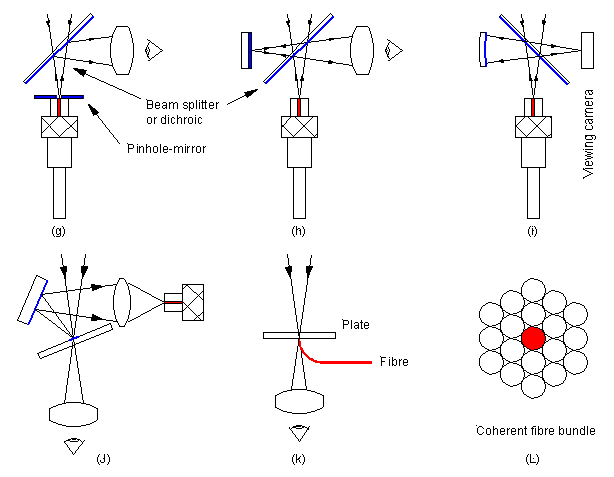

I decided to use a flip-mirror frame as the body of the head and a microscope slider as beam-splitter.
Taking advantage of the flip-mirror mechanism, I will replace the mirror by a 3D printer frame, holding the microscope slider.

Building process:
In order to hold the optical fiber, I designed a 1 1/4 inch barrel with a drill to thread a female SMA connector.

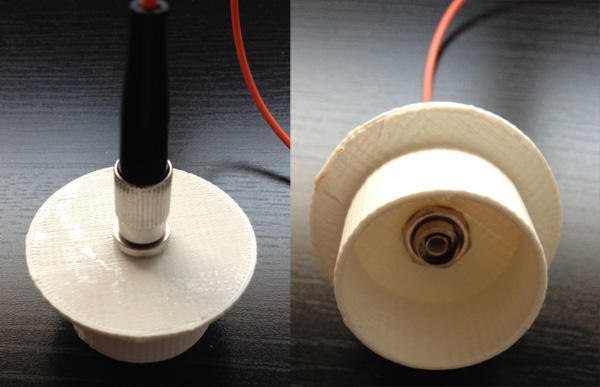
The next step was printing the beam-splitter frame and install the microscope slider. It was a bit tricky as I had to make the slider shorter and accommodate it in the frame flange (designed for that purpose). I decided to use M3 washers to block the slider into the frame.



It was time to install the beam-splitter into the flip-mirror frame.

Once the beam-splitter was mounted, I needed to check the alignment. I used a collimation laser to check the aligment of the beam-splitter. I use a piece of paper to observe the laser beam position on the reflecting side.
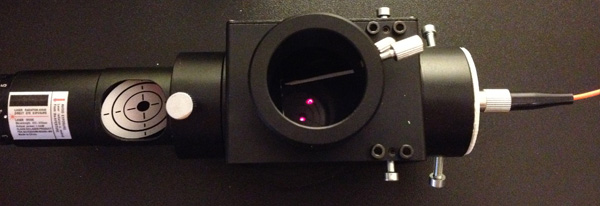
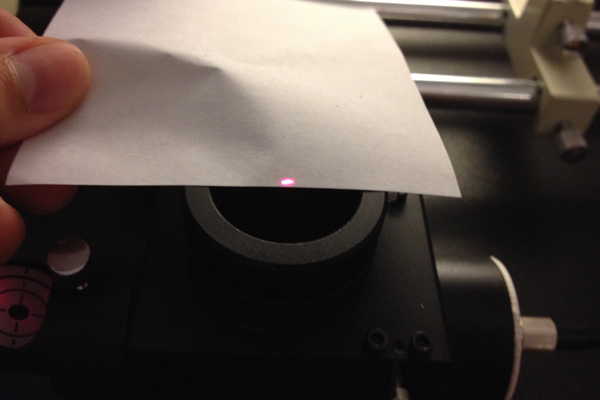
Once the laser beam was aligned (it depends on the beam-splitter angle), I adjusted the end-stop screw to maintain this position.

Once the reflecting side is aligned, it was time now for the transmitting side. To check the alignment I installed the optical fiber and check if I could see the red light on the other side of the fiber.



Once both sides were aligned, the next step was a test in real conditions. I installed the optical fiber head in an ED80 refractor.

I first installed one camera on each side, in this case a Meade DSI-II in the reflecting side and one QHY-5 Monochrome in the transmitting side. I wanted to check the focal point. Both cameras would have to be placed at a parafocal point (both cameras on focus).
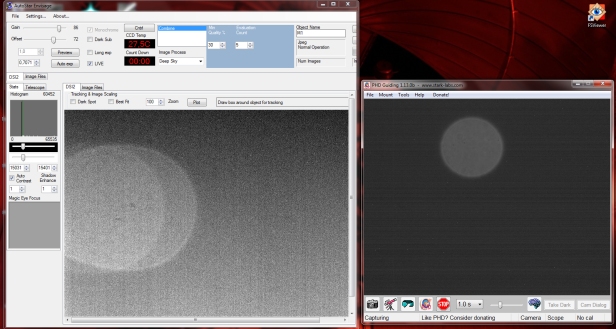
I started first turning the telescope focuser to reach focus on the QHY-5. After reaching focus on the QHY-5, I would regulate the flip-mirror screw focuser to reach focus on the Meade DSI-II.
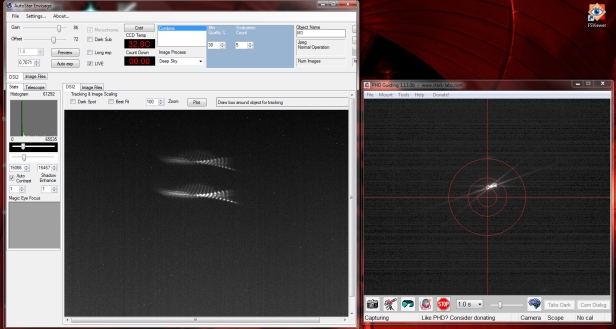
I used a Bahtinov mask to help me on the focusing of the QHY-5 (image on the right). The image on the left shows a distortion and ghost image (due to the microscope slider). This was the best focusing I could get.
At this point, I could conclude that the microscope slider, although it can be used as a beam-splitter, it makes it impossible to use the reflecting image for guiding purposes. It can be used to place a bright target in the field of view, but that’s all.
Anyway, once at this point, it was time to check if I could record any light (from the star) in the other side of the optical fiber.
I installed a modified DSLR camera (EOS 1100 D) with a 50mm lens (installed in the opposite way for macro purposes) and centered the optical fiber.
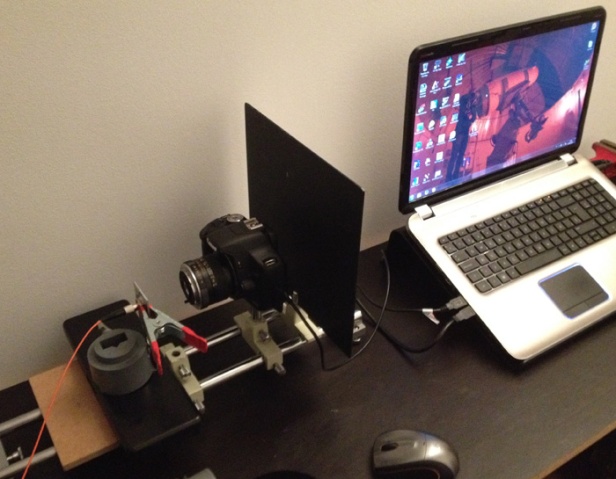
In order to focus the DSLR into the optical fiber, I used an artificial light source (LED), to get a brighter beam.
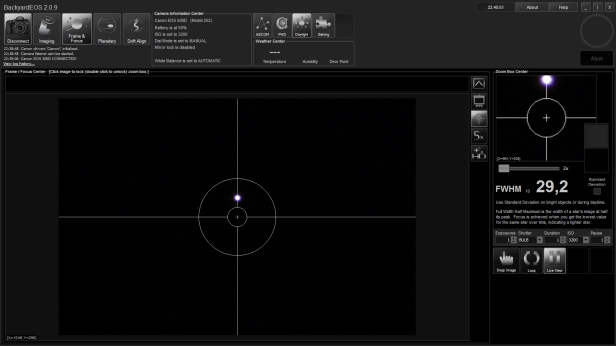
Once all the cameras were focused, I removed the QHY-5 and placed the optical fiber in the telescope, re-centered the star (Vega) and captured an image with the DSLR.
DSLR parameters:
- Exposure time: 4s
- ISO: 3200
- Software: BackyardEOS
This was the result:
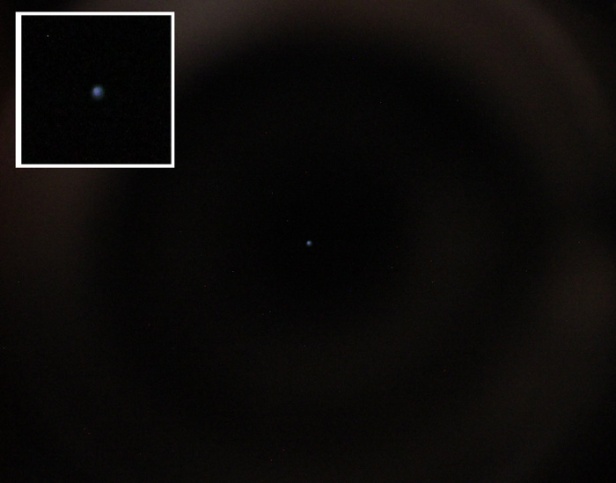
As seen in the image, I was able to record light from the star!!
Ok, it is time for some conclusions now:
- The microscope slider, although can be used as a beam-splitter, it is not suitable for this purpose. I have to check/test a proper beam-splitter (30-70 is my preferred option).
- The system works well in terms guiding purposes and spectroscope light feeding.
- The next step will be replacing the beam-splitter and try to capture light from a fainter star (Vega was an easy target).


